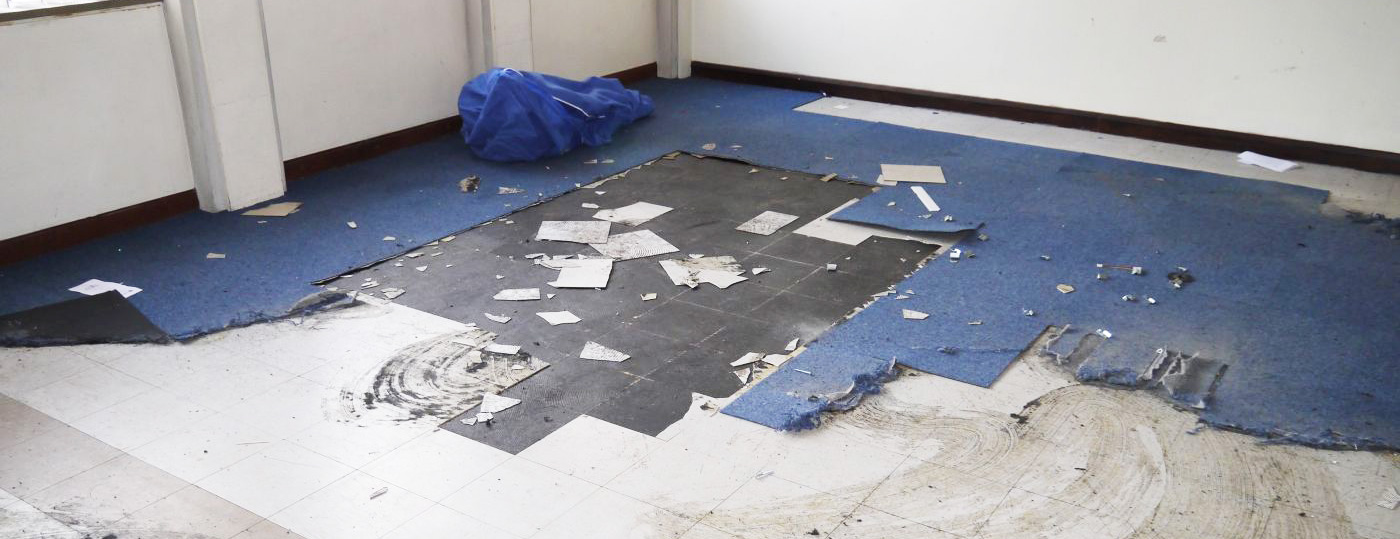Asbestos Cement
Vinyl (PVC) flooring or thermoplastic tiles potentially contain Asbestos, so can the adhesives and screeds used below the floor coverings. Typically they have 2 – 5% chrysotile (white) asbestos content. Because these materials are very hard wearing they were used in many areas of high occupancy such as stairwells and entrance halls as well as main rooms especially in schools, hospitals and many factories.

Where are Asbestos Floor Tiles commonly found?
As mentioned above, asbestos flooring materials were seen to be extremely hard wearing. Along with their cheap price, this made them extremely appealing to business owners, especially people with large floor areas to cover. Most locations with heavy foot-traffic, including shopping centres and public places such as pubs and clubs opted for the use of asbestos floor tiles.
In many domestic homes built before the 1980s, if you remove the carpets you will often find asbestos floor tiles that have been covered over the years. Asbestos was often mixed into vinyl as it was believed it improved the products strength. The use of asbestos in flooring materials was phased out in the 70’s and 80’s and by 1999 all uses of asbestos was banned in the UK. The general awareness of asbestos in floorings has grown and more people are looking to have it removed from their properties.
Are Asbestos Floor Tiles dangerous?
Asbestos in vinyl products only becomes hazardous when the fibres in them are released and become airborne. As long as the PVC floor tiles are in good condition and are well maintained, they will not pose a risk as the asbestos is bonded tightly within the vinyl, preventing it from escaping.
Asbestos in this type of material is classed as “non-friable” which basically means it’s not easily broken/damaged, which would allow it to release fibres. It’s when cutting, sanding or disturbing damaged floor tiles that can result in the release of asbestos fibres. If inhaled over a long period of time, asbestos fibres can cause illnesses such as lung cancer, asbestosis or mesothelioma.
Who’s at risk from its exposure?
On a day-to-day basis, working in a building with some asbestos floor tiles should not be an issue as long as they’re in good condition. However people working directly with the materials could become exposed, such as:
- Construction workers
- Carpenters
- Floor Installers
- Maintenance workers
- DIY renovators
- Demolition crews
Any person who works in a job where they may have to disturb asbestos floor tiles are at risk of being exposed to the fibres.
Should I remove Asbestos Floor Tiles?
Floor tiles mostly contain around 2% asbestos and won’t release any fibres as long as they’re left alone and are in good condition. If you are doing building works, or are in a position where it’s likely the asbestos fibres could be disturbed and released, then it’s time to think about removing them.
As with every type of asbestos material, we always suggest first taking a sample to find out if it actually contains any asbestos. This gives specialist companies, such as us at Midlands Asbestos Solutions Ltd, the best position to provide advice of how to deal with the material and whether the asbestos needs removing or leaving in place. We’d always advise leaving asbestos tile removal to a fully trained, specialist team, rather than attempting to remove it yourself as this could cause you more harm in the future.
Get a FREE Quote
For further information about how we can help you, please call our 24/7 helpline directly. Or complete our enquiry form below.
We aim to respond to every customer enquiry within 24 hours.